
We Travel To... Caribbean
If you're longing for a place where time slows down, the sun seems to kiss everything golden, and the air is filled with music, spice, and sea salt then it might be time to set your compass for the Caribbean.
Antigua and Barbuda
Concord Falls (folk stories of forest nymphs bathing in hidden pools)

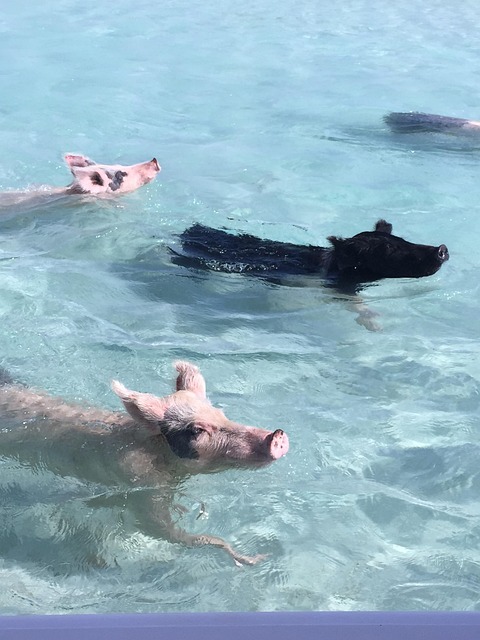
Bahamas
Warm, sunny weather year-round with tropical breezes perfect for beach days, boating, and water sports.
White and pink sand beaches, turquoise shallows, and vibrant coral reefs make for unmatched snorkeling and diving.
Bahamian traditions, colonial forts, pirate legends, and island folklore bring the past to life.
Fresh conch, seafood shacks, rum-based drinks, rake ‘n’ scrape music, and Junkanoo festivals create a flavorful cultural experience.
Just a short flight from many U.S. cities, with a wide range of islands from lively Nassau to quiet, secluded cays.
Snorkeling & diving in places like Dean’s Blue Hole, Andros Barrier Reef, and Nassau’s wrecks.
Island hopping each island offers something different, from untouched beaches to bustling towns.
Fish Fry at Arawak Cay (Nassau) authentic Bahamian food, live music, and local vibes.
Sunset cruises & sailing perfect way to end the day, cocktail in hand.
Mid-December to mid-April (dry season) perfect beach weather and peak events like Junkanoo. Shoulder Season May–June, early November fewer crowds, lower prices, still excellent weather. Hurricane Season June–November (storms are rare but possible always check forecasts if traveling during this period).
Barbados
Barbados Wildlife Reserve: Saint Peter green monkeys, tortoises and more in a natural setting.
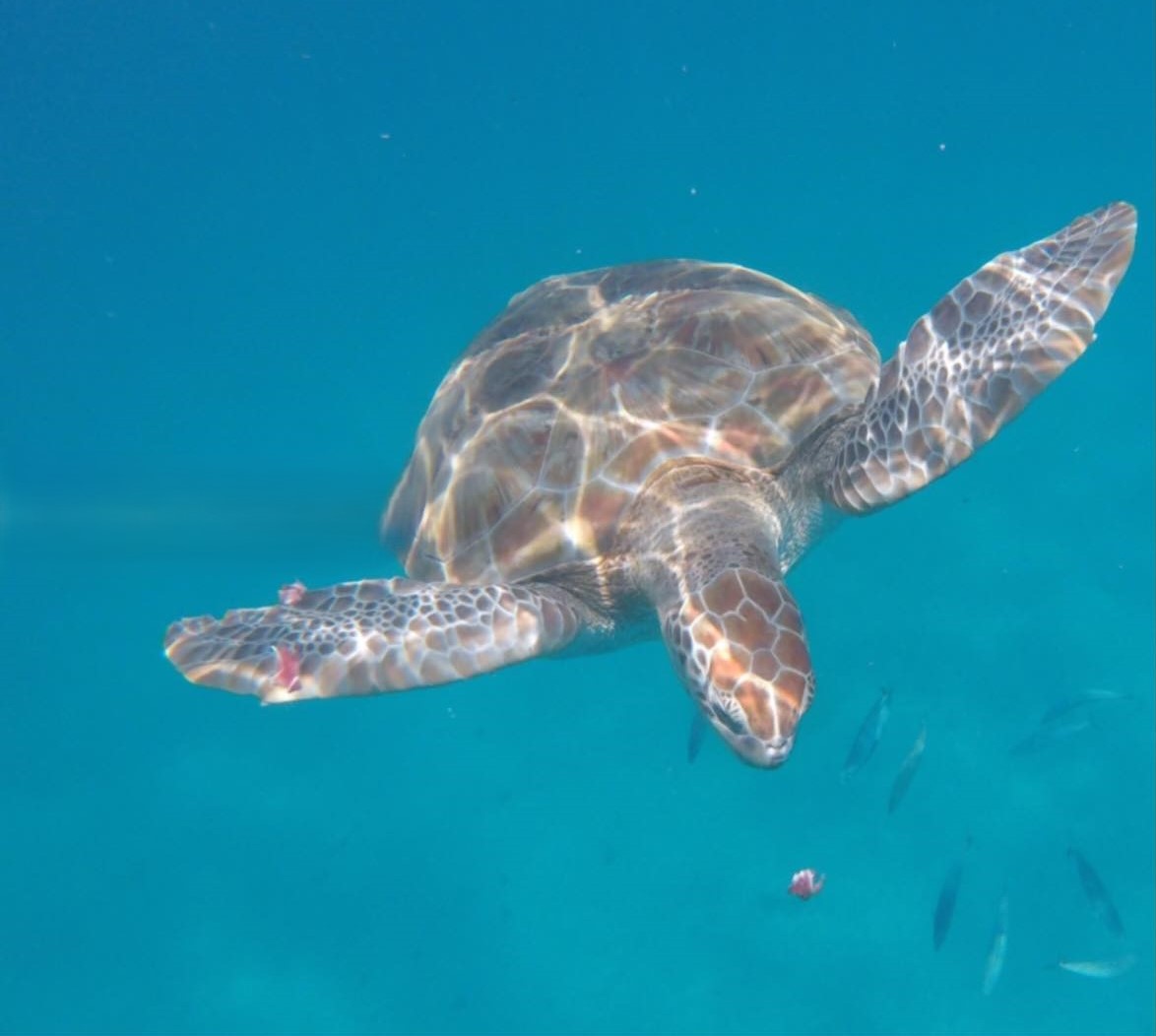
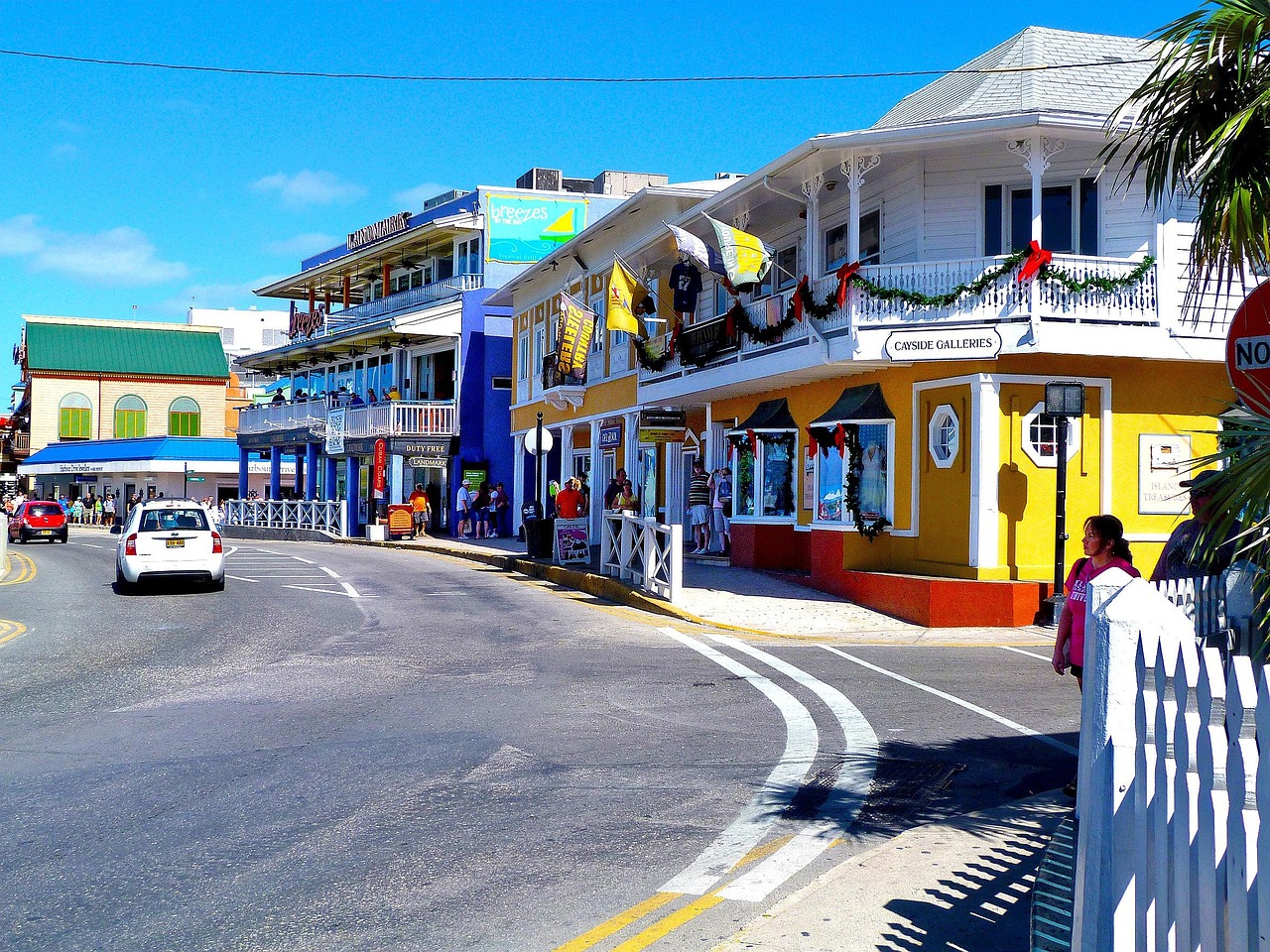
Grand Cayman
Grand Cayman
They say Grand Cayman is all about luxury and yes, you’ll find that here. High-end resorts, sleek yachts, world-class dining. But the truth of this island runs deeper than its polished surface. Because Grand Cayman isn’t just a playground for the well-traveled it’s a place where nature whispers beneath the glamour, where history anchors the present, and where the water holds stories you can only hear if you slow down and listen.
This isn’t just a place to escape to it’s a place to explore, to connect, and to wonder. Whether you’re floating over coral gardens or wandering through George Town’s colorful streets, Grand Cayman invites you not just to relax, but to experience something real something clear, calm, and quietly profound.
Why Go
Go for the water
This is one of the most beautiful marine environments in the world. The sea here isn’t just blue it’s crystal-clear, impossibly calm, and alive with life. You can snorkel with stingrays, dive shipwrecks and underwater walls, or simply float and feel the ocean carry you.
Seven Mile Beach might be the headliner but it’s what lies beneath the surface that steals the show.
Go for the diving
Grand Cayman is a diver’s dream. Warm water, excellent visibility, and a coral reef system teeming with color and movement. Explore the Kittiwake shipwreck. Descend into the abyss at Bloody Bay Wall. Or drift through coral canyons where sea turtles glide like they own the place.
Even if you’ve never dived before this is the place to start.
Go for the ease
Everything just works here. It’s safe. Clean. Friendly. English is spoken, the US dollar is accepted, and the infrastructure is modern. This is Caribbean travel with zero stress where you can focus entirely on soaking up the sun, the sea, and the moment.
Go for the flavor
Seafood so fresh it tastes like the ocean. Jerk chicken sizzling roadside. Conch stew, cassava cake, and rum punch with a kick. The food here blends island soul with international flair — and every bite tells you you’re exactly where you’re meant to be.
Must See Sites
Seven Mile Beach: Wide, white, and endlessly inviting. A postcard-perfect stretch of sand that lives up to every photo. Swim, sunbathe, paddleboard, or just do nothing at all.
Stingray City: Wade or snorkel in shallow, clear water as dozens of gentle stingrays glide around you. A surreal, unforgettable experience.
George Town: The island’s capital part cruise port, part cultural hub. Explore the Cayman Islands National Museum, browse local art galleries, and sip something cold at a harborfront bar.
Cayman Crystal Caves: A world hidden underground. Stalactites, stalagmites, and stories carved from limestone. Guided tours take you into the island’s ancient past.
Rum Point: The chillest corner of the island. Hammocks, shade, and perfect snorkeling just steps from shore. This is where you go when you don’t want to go anywhere at all.
Starfish Point: A calm, shallow beach where red cushion sea stars dot the sandy floor. Gently observe, don’t touch and let nature surprise you.
Unique Experiences
Kayak through a glowing bioluminescent bay under the stars. Dine barefoot on the beach with five-star cuisine and waves for background music. Ride horses through the surf at Barker’s Beach. Charter a boat to your own sandbar and snorkel in total silence. Visit a turtle conservation center and meet one of the island’s most cherished creatures. Taste rum aged in barrels and poured with island stories.
Culture & Heritage
Caymanian Pride: Grand Cayman may be cosmopolitan, but its soul is still island-born. You’ll find that in the food, in the friendliness, and in the deep-rooted respect for the sea.
Traditional Fishing Villages: Towns like Bodden Town and East End still hold the rhythm of old island life — where boats are handmade, fish is caught before sunrise, and neighbors know every name.
Craft & Cuisine: From handmade thatch work to slow-cooked stews, tradition is preserved and passed down, not packaged for display.
Music: Reggae, soca, and old-school country all find a place here — blending under palm trees and beach bars where the vibe is always just right.
Annual Events
Cayman Carnival Batabano (May): The island’s own Carnival celebration — full of vibrant costumes, street parades, steelpan music, and pure Caribbean joy.
Pirates Week (November): A playful, historic festival celebrating the island’s swashbuckling past. Pirate invasions, fireworks, parades, and family-friendly fun.
Cayman Cookout (January): A luxury culinary event hosted by top international chefs — with gourmet tastings, beachfront dinners, and wine that flows freely.
Cayman Islands International Scuba Diving Hall of Fame Induction (Fall): A nod to the island’s rich diving heritage, honoring those who’ve made waves in the underwater world.
When to Visit
Best time: December to April — dry, sunny, and breezy. The island shines during winter months.
Shoulder season: May to June — warm waters, fewer crowds, and great value.
Hurricane season: July to November — possible tropical storms, but still beautiful and peaceful, especially if you’re chasing quiet beaches and deals.
Grand Cayman Is...
Effortlessly beautiful. Calm without being boring. Luxurious without being loud.
It’s the feeling of salt on your skin and a cold drink in your hand. It’s waking up to the sea and falling asleep to silence. It’s knowing everything you need is here sun, serenity, and just enough adventure.
You come to Grand Cayman to unwind but somehow, you leave with more energy than you arrived with. More clarity. More peace.
And once you see the sea here, really see it you’ll never look at blue the same way again.
The We Travel To Team
Dominican Republic
Dominican Republic
Is more than just a beach getaway it’s a vibrant, multifaceted island where Caribbean rhythms meet colonial charm, and lush mountains give way to turquoise coastlines. Sharing the island of Hispaniola with Haiti, the Dominican Republic boasts a rich cultural heritage rooted in Taino, African, and Spanish influences. Spanish is the official language, but the real voice of the island is found in the music, the food, and the warmth of its people.
From the cobblestone streets of Santo Domingo to the sun kissed shores of Punta Cana and the untamed beauty of the Samaná Peninsula, every corner of the Dominican Republic offers something unique. Whether you're ziplining through rainforest canopies, dancing to merengue under the stars, or sipping Dominican coffee in a mountain village, life here moves to a joyful, rhythmic beat.
With its world-famous beaches, dramatic landscapes, rich history, and warm hospitality, the Dominican Republic isn’t just a place you visit it’s a place you feel.
Why Go: Diverse Natural Beauty
White-sand beaches, lush mountains, waterfalls, rainforests, and hidden lagoons the Dominican Republic has it all. Rich Culture & History Home to the oldest European city in the Americas, the country is steeped in colonial history, vibrant traditions, and Afro-Caribbean heritage. Adventure & Ecotourism Waterfalls, hikes, national parks, and thrilling water sports make it a haven for nature lovers and thrill-seekers. Music, Food & Dance
The birthplace of merengue and bachata expect music in the streets, flavorful dishes like sancocho and mofongo, and nightlife that lasts until sunrise. Accessible & Affordable
Well-connected to major U.S. and European cities, with a range of resorts, boutique hotels, and eco-lodges to fit any budget.
Top Sites (Must-See Places):
Santo Domingo (Zona Colonial)
A UNESCO World Heritage Site — explore the first cathedral of the Americas, 16th-century forts, plazas, museums, and vibrant cafés.
Punta Cana & Bávaro
Famous for stunning all-inclusive resorts, palm-fringed beaches, and turquoise waters ideal for snorkeling, catamaran sailing, and parasailing.
Samaná Peninsula
Off-the-beaten-path paradise with waterfalls (like El Limón), pristine beaches, and humpback whale watching (Jan–Mar).
Puerto Plata & Teleférico
Ride the Caribbean’s only cable car to Mount Isabel de Torres, overlooking coastal Puerto Plata and historic Victorian architecture.
Jarabacoa & Constanza
Mountain towns in the heart of the island — perfect for rafting, canyoning, hiking, and cool, crisp air.
Bahía de las Águilas
One of the most untouched, remote beaches in the Caribbean — part of a protected national park in the southwest.
Most Popular Attractions:
Whale Watching in Samaná (Jan–Mar): One of the best places in the world to see humpbacks up close. Scuba diving & snorkeling along coral reefs in Bayahibe and Sosúa. Island hopping to Saona or Catalina Island postcard-perfect shores and crystal-clear waters. Los Tres Ojos (Santo Domingo): A series of underground limestone caves with glowing blue lagoons. Dune Buggy & ATV Tours in Punta Cana explore the countryside off-road. Cultural walking tours of Zona Colonial stories of conquistadors, revolutionaries, and poets.
Popular Annual Events:
Dominican Carnival (February)
A nationwide explosion of music, dance, costumes, and cultural pride. La Vega is the most iconic.
Merengue Festival (July–August, Santo Domingo)A celebration of the DR’s national dance with live performances, street parties, and nonstop rhythm.
Semana Santa (Holy Week, March/April) Religious processions meet beach getaways an important time culturally and spiritually.
Puerto Plata Festival del Ron (Rum Festival) Taste and toast with some of the finest rum brands in the Caribbean.
Cabarete Jazz Festival (November) A beachside blend of world-class jazz and laid-back island ambiance.
Historic / Cultural Sites:
Alcázar de Colón
The palace of Diego Columbus, son of Christopher Columbus now a museum filled with colonial-era artifacts.
Basilica of Higüey A modern architectural marvel and major pilgrimage site in eastern DR.
Museo del Hombre Dominicano Showcases pre-Columbian Taino culture and the island’s ethnographic roots.
Altos de Chavón (La Romana) A replica 16th-century Mediterranean village with artists’ studios, boutiques, and an amphitheater.
Seasonal Tip: Best Time to Visit
December to April – Peak season with dry, sunny weather perfect for beaches and festivals.
May to June, September to early November – Fewer crowds and lower prices, though rain is more likely.
Hurricane Season – June to November; tropical storms are possible, but rare just monitor forecasts.
The Dominican Republic Is... A dynamic mix of paradise and passion. From salsa beats in Santiago to the serenity of Las Galeras, it offers a little bit of everything adventure, culture, romance, and real Caribbean soul.
Whether you're climbing waterfalls, walking in the footsteps of explorers, or dancing barefoot in the sand, one thing is certain:
In the Dominican Republic, life isn’t just lived it’s celebrated.
And every time you go, it feels like coming home. The We Travel To Team
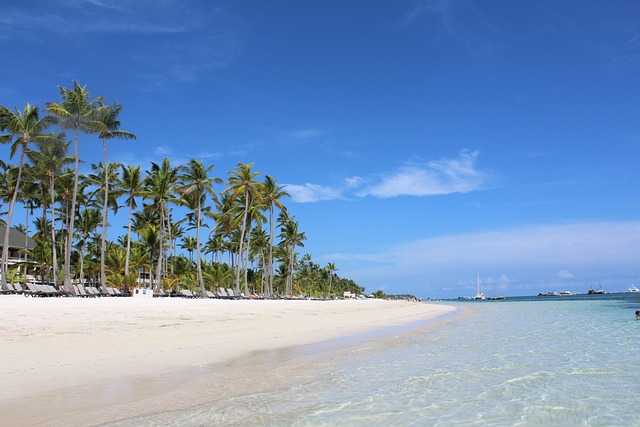
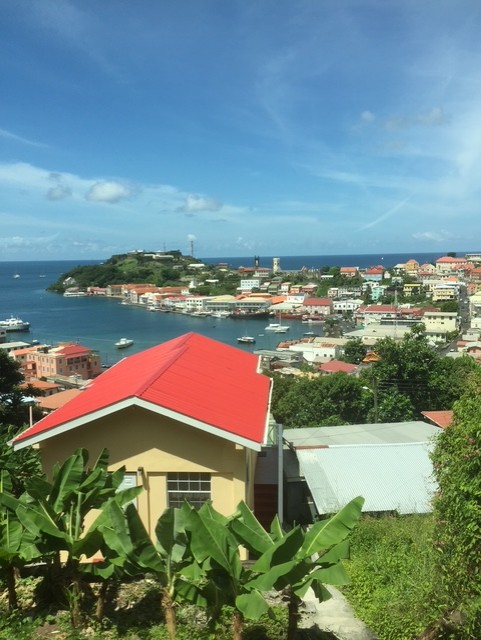
Grenada
Sampling local cuisine oil down (Grenada’s national dish), fresh seafood, tropical fruit, and rich, dark chocolate.
Rum tasting at River Antoine Rum Distillery the oldest functioning water-powered distillery in the Caribbean.
Because sometimes, the most beautiful places are the ones that don’t shout they whisper. Because here, you don’t just travel you belong. Because Grenada doesn’t try to impress you it connects with you. Long after you’ve left, the smell of spices, the sound of calypso, and the peace of that quiet beach will stay with you.
Jamaica
Jamaica
They say Jamaica moves to its own rhythm and once you’re here, you’ll feel it in your bones. Not just in the sway of reggae or the pulse of dancehall, but in the land itself. The Blue Mountains that greet the dawn. The golden beaches that kiss the Caribbean. The patois english based creole language spoken on every street corner, playful and full of life. Jamaica isn’t just a destination it’s a mood, a movement, a story still being written. This is not a Caribbean painted to perfection for postcards.This is a real place, bold and unfiltered. Full of contrasts and character. It’s loud when it wants to be, quiet when it needs to be. And always, it’s alive.
Why Go
Go for the natural drama
From the cool mist of Blue Mountain Peak to the roaring majesty of Dunn’s River Falls, Jamaica offers raw, stunning landscapes. Hike through lush rainforests. Cliff-jump into turquoise water at Rick’s Café. Drift down the Martha Brae River on a bamboo raft, guided by someone who knows every bend like an old friend.
Go for the rhythm
This is the birthplace of reggae, but that’s just the beginning. Music is more than entertainment here it’s resistance, celebration, history. Visit Trench Town, the cradle of Bob Marley’s sound. Hear roots reggae pulsing from a sound system in a Kingston yard. Let a riddim catch your heart in Negril and not let go.
Go for the flavours
Bold. Fiery. Unapologetic. Jamaican food is as expressive as its people. Jerk chicken straight off the pimento wood grill. Ackee and saltfish for breakfast. Curry goat, rice and peas, patties, pepper shrimp, and that thick, smoky soup they call mannish water. Wash it down with fresh jelly coconut, a bottle of Red Stripe, or a shot of overproof rum (if you dare). And don’t skip the street food it’s where the real magic is.
Go for the soul
There’s something grounding about Jamaica. A deep pride in roots and resilience. A spiritual current that hums beneath daily life. Rastafari, Maroon traditions, Christianity, revivalism faith here is layered and lived. This is an island that’s fought for its voice, and found it. And the people? Proud, poetic, witty, and endlessly welcoming with stories to share, if you’re ready to listen.
Must-See Sites
Kingston: The capital is a study in contrast — gritty, creative, electric. Visit the Bob Marley Museum, explore Devon House, tour the National Gallery, or catch a street dance if you're lucky.
Blue Mountains: Hike, bike, or simply breathe. Cool, misty mornings. Birds you won’t find anywhere else. And the best coffee in the world, grown right here.
Negril: Laid-back and legendary. Seven miles of beach by day, cliff-diving and sunset toasts at Rick’s Café by night.
Port Antonio: Quietly magical. More rainforest than resort. Visit the Blue Lagoon, raft the Rio Grande, and feel the slower pulse of this lush, soulful corner of Jamaica.
Ocho Rios: Home to Dunn’s River Falls, Mystic Mountain, and Green Grotto Caves. A blend of adventure and chill.
Treasure Beach: An under-the-radar south coast gem. Fewer crowds, more charm. Local fishermen, quiet beaches, and community-run guesthouses.
Unique Experiences
Rafting the Martha Brae a peaceful, dreamlike float through the heart of the island.
Climbing Dunn’s River Falls hand-in-hand with strangers who quickly become friends.
Attending a street dance or sound clash in Kingston full immersion in music culture.
Staying in a locally-owned guesthouse or eco-lodge. The hospitality? Unreal.
Visiting a Maroon village to learn about the island’s resistance history and deep cultural heritage.
Coffee tours in the Blue Mountains from bean to brew, with views for days.
Joining in Jamaica’s carnival a vibrant explosion of colour, feathers, music, and unity.
Culture & Heritage
Maroon History: The story of runaway slaves who formed free communities in the mountains. Learn about their traditions, music, and fierce independence.
Rastafari: Not just a religion — a philosophy, a way of life. Symbolized by dreadlocks, ital food, and reverence for Ethiopia, Haile Selassie, and natural living.
Patois (Patwa): Jamaica’s creole language — melodic, rich with metaphor, and a cultural treasure in itself. “Wah gwaan?” is more than a greeting; it’s a vibe.
Annual Events
Rebel Salute (January): One of the purest roots reggae festivals in the world — family-friendly and spiritually grounded.
Reggae Sumfest (July): Jamaica’s biggest music event, featuring top acts from reggae and dancehall.
Jamaica Carnival (April): Road marches, fetes, and feathered revelry across Kingston and beyond.
Accompong Maroon Festival (January 6): A powerful celebration of Maroon freedom and culture.
When to Visit
Best time: December to April - dry season, ideal for beaches and festivals.
Shoulder season: May to June, September to November - quieter, lower rates, occasional rain.
Hurricane season: August to October - some risk, but also lush landscapes and fewer crowds.
Jamaica Is...
Not a single story, but a symphony. It’s the echo of drums in the hills, the sting of Scotch bonnet on your tongue, the warmth of sun and soul alike. It’s the confidence of a place that knows who it is and doesn’t care if you don’t get it yet.
You don’t come here to escape reality. You come here to feel something real.
So take your time. Say “irie.” Listen to the music in the language, the rhythm in the rain, the poetry in every plate of food.
Let the island move you in every sense of the word.Jamaica isn’t just to be seen. It’s to be felt. The We Travel To Team
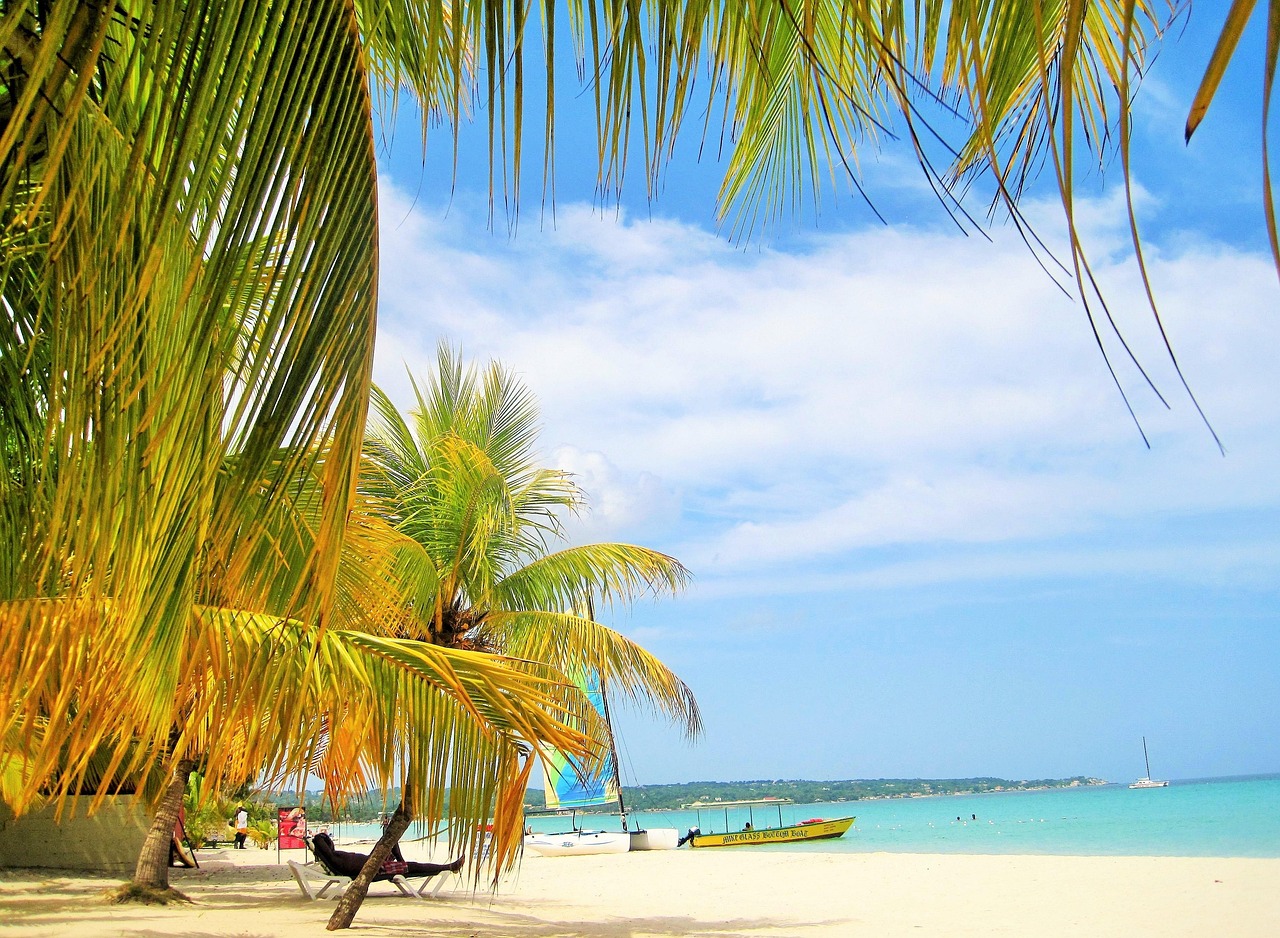
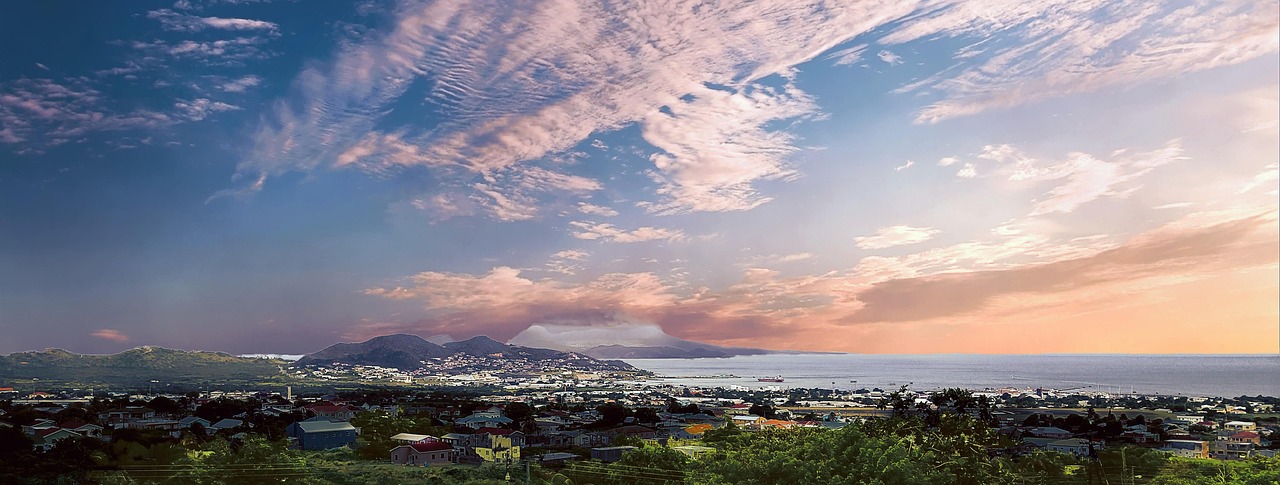
St Kitts and Nevis
St Kitts and Nevis
They say these twin islands whisper where others shout, once you're here, you'll understand why.
Not in a rush or a roar, but in the hush of the mountains. The sway of sugarcane fields in the breeze. The creak of old plantation ruins. The soft lapping of sea on black sand beaches.
St Kitts and Nevis isn’t just a Caribbean destination it’s a place where time slows, roots run deep, and beauty lives quietly in every corner.
This is not a place trying to be the next big thing.
It’s a place that already knows who it is. Calm. Confident. Connected to the land and its history. It’s not flashy. It doesn’t need to be. It just is and that’s what makes it unforgettable.
Why Go
Go for the green
St Kitts rises from the sea in rolling hills and volcanic ridges, with Mount Liamuiga watching over it all. Nevis, smaller and more intimate, is wrapped around its own quiet giant Nevis Peak.
Hike the rainforest trails, where vines hang thick and the air smells of earth and rain. Or simply look up the green is everywhere.
Go for the heritage
Once a major hub in the colonial sugar trade, these islands carry their past with quiet dignity. At Brimstone Hill Fortress, the stone walls stand strong against the sky a monument to both power and perseverance. Nevis, birthplace of Alexander Hamilton, is scattered with old churches, crumbling sugar mills, and hot springs that once drew the elite of Europe. History lives here in the land, in the buildings, in the stories.
Go for the water
Snorkel clear shallows. Sail between the islands on a breezy catamaran. Dive shipwrecks and coral reefs.
Or just float, quietly, in the calm Caribbean the kind of peace you feel in your bones.
Go for the people
This is a place where hospitality isn’t a performance it’s a part of daily life.
People greet you like they mean it. Conversations are unhurried. Strangers become storytellers. There’s pride here, and patience, and warmth that stays with you.
Must-See Sites
Brimstone Hill Fortress: A UNESCO World Heritage Site, this massive 17th-century fort offers sweeping views and layered history known as the “Gibraltar of the West Indies.”
Mount Liamuiga: Hike through dense rainforest to the rim of a dormant volcano challenging but worth every step.
Nevis Peak: Towering over its island, this iconic mountain is a spiritual landmark. You can climb it or simply admire it from every beach.
Charlestown (Nevis): The island’s capital is small but soulful full of Georgian architecture, local culture, and a deep sense of history.
Basseterre (St Kitts): Colonial charm meets island life. Wander through the Circus, explore the National Museum, and watch life unfold at a gentle pace.
Romney Manor & Caribelle Batik: A former plantation turned lush botanical garden and working batik studio. History and art in one peaceful spot.
Black Rocks: Jagged volcanic formations on the Atlantic coast dramatic, raw, and beautiful.
Unique Experiences
Ride the St Kitts Scenic Railway once used to transport sugarcane, now offering a panoramic journey through villages, fields, and coastlines.
Take a short boat ride between the islands just 45 minutes, but it feels like a world apart.
Soak in the thermal baths near the old Bath Hotel on Nevis, healing waters, quiet surroundings, and a sense of timelessness.
Visit the Friday night seafood BBQs in St Kitts grilled lobster, live music, locals and visitors dancing barefoot in the sand.
Join a local festival whether it’s Carnival in December or Nevis’ Culturama in summer, these are celebrations rooted in tradition and joy.
Explore ruins of old sugar estates silent witnesses to a complex past, now overtaken by vines and memories.
Culture & Heritage
Maroon Legacy: Learn about the communities of escaped slaves who resisted colonization and kept their traditions alive in the mountains and forests.
Colonial History: The island’s past is everywhere from the European forts to the African-built stone walls, the echoes are undeniable.
Local Life: Farmers’ markets, fish fries, calypso competitions, cricket matches this is a place where culture is lived, not staged.
Annual Events
St Kitts Music Festival (June): A genre-spanning celebration of sound, featuring Caribbean and international artists.
Nevis Culturama (July–August): A cultural explosion of music, dance, theatre, and pride celebrating Nevisian heritage with colour and joy.
Carnival (December–January): The year ends in celebration parades, costumes, soca rhythms, and island energy at full tilt.
St Kitts and Nevis Independence Day (September 19): A patriotic celebration full of pride, pageantry, and community spirit.
When to Visit
Best time: December to April - dry season, warm days, cool nights, perfect for hiking, swimming, and exploring.
Shoulder season: May to June - fewer crowds, better deals, and still plenty of sunshine.
Hurricane season: July to November - the islands are lush and quiet, with the occasional tropical storm, but also sweet travel deals and peaceful days.
St Kitts and Nevis
Is a quiet wonder, a soft breath in a loud world, it’s not about bucket lists it’s about stillness about walking where sugar once ruled and nature now reclaims about watching the sun dip behind a volcano and feeling something shift inside.
This is a place for travellers, not tourists, for the curious, the calm, the connected, for those who don’t need more noise just more meaning
St Kitts and Nevis doesn’t try to impress you, it simply welcomes you, that, in the end, leaves the deepest mark. You don’t just visit, you feel it.
And maybe, just maybe, you find a quieter version of yourself in return.The We Travel To Team
St Lucia
St Lucia
They say St Lucia was made for postcards but the truth runs deeper than picture-perfect views. Yes, the Pitons rise like ancient giants from the sea. Yes, the beaches curve just right, and the water is impossibly blue. But what makes this island unforgettable isn’t just the way it looks it’s the way it feels.
There’s something in the air here. In the steam of the volcanic springs. In the rhythm of a steelpan on a quiet beach. St Lucia doesn’t just impress it enchants. Slowly, deeply, without trying.
This isn’t a stage set for tourists.It’s a living, breathing island with layers.With villages tucked into green hillsides. With Creole kitchens, fishing boats, and winding mountain roads that always lead to something beautiful. It’s dramatic and gentle, all at once. And it invites you in not to spectate, but to feel.
Why Go
Go for the natural beauty
The island's landscape is one of the most dramatic in the Caribbean.
The Pitons — two volcanic peaks rising from the sea — are more than a backdrop; they’re symbols of the island’s soul.
Hike through the rainforest. Swim beneath hidden waterfalls. Soak in the warm mud baths of Sulphur Springs.
Watch the sunrise from the beach, then watch it set behind the mountains.
St Lucia is nature at its most alive.
Go for the culture
A rich blend of African, French, and Caribbean influences runs through everything — from the language to the music to the food.
You’ll hear Kwéyòl spoken with pride. You’ll see it in the colours of a Madras dress. You’ll taste it in every plate of green fig and saltfish.
This is a place where tradition isn’t frozen in time — it evolves, it pulses, it dances.
Go for the romance
There’s a reason lovers come here.
Private beaches. Sunset sails. Hilltop resorts carved into the jungle.
But romance in St Lucia isn’t just about luxury — it’s in the feeling of connection, with the land, with someone else, with yourself.
Go for the people
St Lucians are warm, grounded, and full of quiet pride.
They’ll point you to the best view, the best roadside grill, the best story.
Not because they have to — because they want to share what they love.
Must See Sites
The Pitons (Gros Piton and Petit Piton): Hike one, admire both. UNESCO World Heritage icons that define St Lucia’s skyline and spirit.
Soufrière: The island’s oldest town — home to Sulphur Springs, botanical gardens, historic estates, and that unforgettable Piton view.
Sulphur Springs: The Caribbean’s only “drive-in” volcano. Mud baths, hot springs, and the scent of earth and time.
Diamond Falls & Botanical Gardens: A rainbow-coloured waterfall hidden in a lush Eden of tropical plants and mineral-rich waters.
Pigeon Island National Park: A blend of history and beauty. Fort ruins, panoramic views, and quiet beaches — all on one walkable peninsula.
Castries Market: Bright spices, fresh produce, handmade crafts — a perfect slice of daily life and local flavour.
Marigot Bay: A sheltered inlet so stunning, it looks painted. Yachts, palm trees, and calm water that feels like a private dream.
Unique Experiences
Sail at sunset with the Pitons glowing in gold. Take a boat to a secret beach only locals know. Dance to a live soca band at a Friday night fish fry in Anse La Raye or Gros Islet.
Soak in a natural mud bath, rinse off in a waterfall, and feel brand new. Visit a cocoa estate and make your own chocolate from scratch. Hike to a mountaintop view and find a whole new perspective. Wake early, grab a local breakfast, and just wander.
Culture & Heritage
Kwéyòl Culture: Creole Day in October brings food, music, and national pride to life but the culture is here year-round, in the language, the clothes, the spirit.
Music & Dance: Calypso, zouk, soca, and steelpan fill the streets during Carnival and beyond. Every beat tells a story.
Cuisine: Green fig and saltfish. Breadfruit and plantain. Spicy seafood. Lucian cuisine is hearty, flavourful, and full of love.
Faith & Festivity: From village festivals to Sunday church services, there’s a rhythm to life that’s deeply rooted and joyfully shared.
Annual Events
St Lucia Jazz & Arts Festival (May): A world-class event with performances in stunning settings from historic parks to oceanside stages.
Gros Islet Friday Night Street Party (Weekly): Not a one-off this happens every week. Grilled fish, cold Piton beer, music, and a whole lot of energy.
Creole Heritage Month (October): A celebration of everything that makes St Lucia uniquely Lucian language, food, dance, and pride.
St Lucia Carnival (July): A joyful explosion of colour, music, and movement. Parades, fetes, and pure Caribbean energy.
When to Visit
Best time: December to April - dry, breezy, and perfect for beach days, hikes, and festivals.
Shoulder season: May to June - fewer crowds, lush landscapes, and great value.
Hurricane season: July to November - tropical showers and quiet beaches, with deals for those who don’t mind a little rain.
St Lucia Is...
A feast for the senses. A harmony of wild nature, deep culture, and quiet confidence.
It’s the steam rising from a volcanic spring. The sound of drums at dusk. The taste of something spicy and sweet you’ve never had before. The smile from someone who’s proud to share their island with you.
This is not a place to rush through.It’s a place to feel. To breathe. To listen. St Lucia doesn’t need to shout to stand out. It just is beautiful, bold, and rooted.
And once you’ve felt it, you won’t forget it. The We Travel To Team
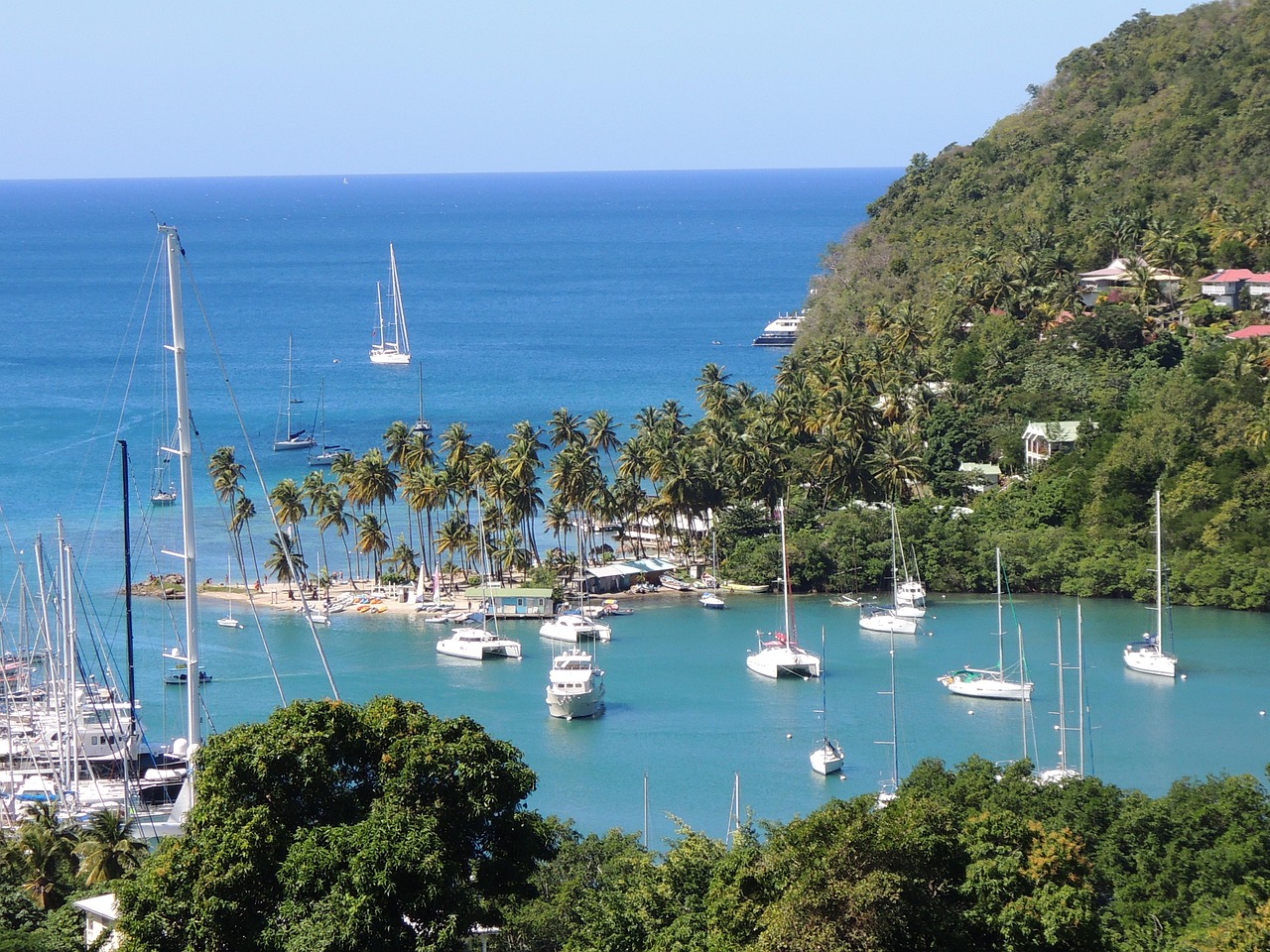
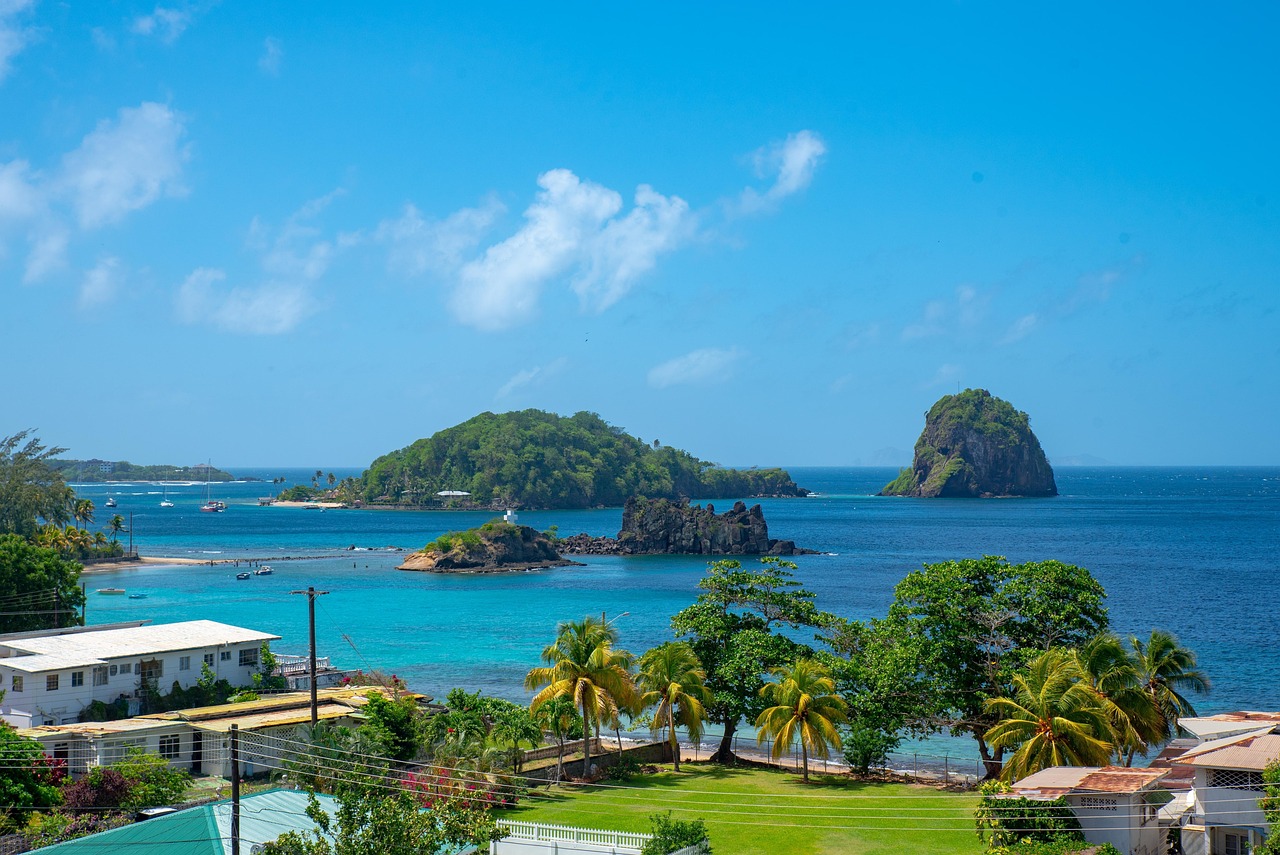
St Vincent and the Grenadines
St Vincent and the Grenadines
They say St Vincent and the Grenadines is where you go to disappear but the truth is, it’s where you go to reconnect, to the sea, to yourself, to a slower, more soulful way of living. Yes, the beaches are untouched, and the water is so clear it feels like glass. The islands stretch like emerald pearls across the Caribbean Sea. But what makes this place unforgettable isn’t just how remote it feels it’s how real it is. Here, nature hasn’t been tamed it’s alive and close. You’ll hear it in the rustle of palm fronds, feel it in the salt on your skin after a long swim. This isn’t just a postcard paradise it’s a scattered archipelago with heart, grit, and quiet magic. Villages cling to coastlines. Wooden boats glide across turquoise bays. People greet you like you’ve always belonged, whether you’re sailing through the Grenadines or wandering Kingstown’s busy streets, this place invites you in not to perform, but to be present.
Why Go
Go for the islands
It’s not just one destination it’s 32. Some you’ve heard of (Bequia, Mustique). Others you won’t find on any bucket list. But each has its own pulse. Sail from island to island. Swim in hidden coves. Walk barefoot on beaches where yours are the only footprints.
From the volcanic majesty of St Vincent to the laid-back rhythm of the Grenadines, this is the Caribbean in its rawest, most authentic form.
Go for the diving and sailing
The Tobago Cays. Say it out loud it even sounds like paradise. A marine park so beautiful, sea turtles feel like part of the welcome party. Coral reefs teeming with life. Anchorages where the stars are the only ceiling. If you love the sea, you’ve found your place.
Go for the authenticity
No mega-resorts. No over-polished gloss. St Vincent and the Grenadines stays true to itself grounded, proud, and real. The food is home-cooked. The roads are winding. The people? Unfiltered and unforgettable.
Go for the quiet
This is not the Caribbean of all-inclusive crowds. It’s for those who want to hear the wind, taste the salt, and lose track of time. Luxury here is space, silence, and nature not just service.
Must See Sites
La Soufrière Volcano (St Vincent): Hike to the rim of this active volcano and stand on the edge of something ancient and alive. It’s not easy but the views, and the feeling, are unforgettable.
Tobago Cays Marine Park: Uninhabited islands. Shimmering lagoons. Sea turtles, rays, and reefs. Come by boat, stay in the water.
Bequia: A sailor’s island with soul. Colourful houses, old boatbuilders, laid-back cafes, and one of the Caribbean’s most charming harbours.
Mustique: Private villas, white-sand beaches, and a hint of rock ‘n’ roll royalty. Glamour without pretense.
Dark View Falls: Twin waterfalls crashing into a lush green gorge. Cross a bamboo bridge and feel the mist on your face.
Kingstown: The capital’s a little chaotic, a little charming. Colonial churches, bustling markets, and a rhythm that’s uniquely Vincentian.
Unique Experiences
Snorkel with sea turtles in a reef-ringed lagoon. Catch a ferry with locals and island-hop the old-fashioned way. Taste fried jackfish on a roadside grill in Barrouallie. Hike through banana plantations to a black sand beach. Visit a whaling village, or a coconut-seller’s stand. Charter a catamaran, drop anchor in a secluded bay, and swim until sunset.
Culture & Heritage
Garifuna Legacy: The story of resistance, survival, and pride lives strong in St Vincent the homeland of the Garifuna people. It’s in the history, the language, and the land itself.
Music & Storytelling: From calypso and reggae to string band music, sound carries far here especially during Nine Mornings, Carnival, or just around a fireside.
Cuisine: Think roasted breadfruit, fried plantains, callaloo soup, and fresh-caught fish. Food here is local, bold, and seasoned with care.
Crafts & Tradition: From handmade fishing boats to intricate straw work, craft is both art and livelihood.
Annual Events
Vincy Mas (June–July): The biggest party of the year. Carnival in all its glory vibrant costumes, Soca beats, street parades, and pure island energy.
Nine Mornings Festival (December): A uniquely Vincentian Christmas celebration. Pre-dawn gatherings, music, dance, and joy a tradition like no other in the Caribbean.
Bequia Easter Regatta (March/April): Sailboats, parties, and good vibes. A must-see if you’re in the Grenadines.
When to Visit
Best time: December to April - dry season, sailing season, and postcard weather.
Shoulder season: May to June - calm seas, cooler prices, more space to yourself.
Hurricane season: July to November - quieter, greener, sometimes wetter, but still beautiful for those willing to go with the flow.
St Vincent and the Grenadines Is...
An escape that feels like coming home. A chain of islands where the sea writes the rhythm, and the land holds the soul. It’s the scent of fried fish by the roadside. The sound of waves lapping against a dock. The quiet pride of people who don’t need flash to be unforgettable.
This isn’t a place for those seeking a curated version of paradise it’s for those who want the real thing.
Come here not to be entertained, but to be awakened. To feel the sun, the sea, the simplicity and to carry it with you long after the journey ends. The We Travel To Team
Trinidad anTrinidad and Tobago
Trinidad and Tobago
They say Trinidad and Tobago is the Caribbean with a twist but that doesn’t quite capture it. This twin island nation doesn’t just offer variety, it offers contrast bold, rhythmic, unapologetic contrast.
On one side, you have Trinidad: vibrant, fast-paced, alive with music, culture, and the kind of energy that surges through your bones. On the other, there’s Tobago: laid-back, serene, and soaked in natural beauty. Together, they create something rare a destination that doesn’t just relax you, it moves you.
This is not a place that tries to be like anywhere else. It’s steelpan and soca. It’s misty rainforests and coral reefs. It’s Carnival feathers at sunrise and sea turtle hatchlings at sunset. It’s complex, dynamic, and deeply rooted in its identity. And it welcomes you, not as a tourist, but as someone who wants to understand, to feel, and to dance.
Why Go
Go for the culture
Trinidad and Tobago is the cultural capital of the Caribbean. From Carnival to calypso, limbo to literature, creativity flows through every street, every celebration, every conversation. This is the birthplace of steelpan and soca but it doesn’t stop there. East Indian, African, European, Chinese, Syrian and Indigenous influences mix into something entirely unique.
This is not borrowed culture. It’s bold, homegrown, and worn with pride.
Go for the nature
Tobago’s beaches are the kind you dream about quiet, uncrowded, and backed by lush green hills. But beyond the sand, there’s more: coral reefs full of life, waterfalls deep in the forest, and trails where you might spot a scarlet ibis or a sleepy sloth.
In Trinidad, nature is bigger, wilder. There are caves, mountains, bird sanctuaries, and the otherworldly spectacle of the Caroni Swamp glowing with fireflies at dusk.
Go for the food
You haven’t tasted the Caribbean until you’ve eaten in Trinidad and Tobago. Doubles on the roadside. Bake and shark on Maracas Beach. Curry crab and dumpling in Tobago. It’s spicy, sweet, savoury, and alive with flavour. The food here tells stories of heritage, migration, and celebration with every bite.
Go for Carnival
There is Carnival… and then there is Trinidad Carnival. The greatest show on Earth. A celebration of freedom, resistance, beauty, and sound. For two days, the entire island becomes a stage. For many, it’s a life-changing experience.
Must See Sites
Queen’s Park Savannah (Trinidad): The beating heart of Port of Spain, especially during Carnival. By day, it’s a giant park ringed with colonial mansions. By night, it’s alive with food stalls, music, and movement.
Maracas Bay (Trinidad): One of the most iconic beaches on the island - framed by mountains, with waves made for body surfing and bake and shark worth the trip alone.
Caroni Bird Sanctuary (Trinidad): A maze of mangroves and waterways. Take a boat at sunset and watch flocks of scarlet ibis the national bird paint the sky red.
Main Ridge Forest Reserve (Tobago): The oldest protected rainforest in the Western Hemisphere. Hike under its green canopy and listen to the island breathe.
Pigeon Point (Tobago): Picture-perfect doesn’t do it justice. White sand, clear water, and that famous jetty Tobago at its most photogenic.
Nylon Pool (Tobago): A natural, waist-deep pool in the middle of the sea, where the water is said to rejuvenate the skin and spirit.
Unique Experiences
Dance through the streets in a Carnival band, feathers in your hair and paint on your skin. Catch a live steelpan performance under the stars. Take a food crawl from roti to pholourie to souse. Hike to the top of El Tucuche and see all of Trinidad below you. Watch leatherback turtles nesting on a moonlit beach. Swim in Tobago’s bioluminescent waters at night and feel like you’re in another world.
Culture & Heritage
Carnival & Creativity: Carnival is more than a party it’s a cultural expression rooted in history and freedom. It’s mas, moko jumbies, tassa drums, and costumed storytelling.
Multicultural Roots: Trinis are proud of their mix. You’ll hear Hindi prayers, African drums, Catholic bells, and Muslim calls to prayer sometimes on the same street. Diwali, Eid, Emancipation, and Christmas are all celebrated with equal passion.
Music: Steelpan, soca, calypso, chutney the soundtrack of the islands is vibrant, local, and full of life.
Language & Lingo: English is spoken, but it’s the rhythm of Trini talk that pulls you in. Full of wit, warmth, and phrases you’ll want to take home.
Annual Events
Trinidad Carnival (February/March): Two days of parades, parties, and pure joy but the season begins months before, with fetes, steelpan competitions, and J’ouvert at dawn.
Tobago Heritage Festival (July–August): A celebration of Tobago’s rich cultural traditions dance, music, oral history, and community pride.
Divali (October/November): The Hindu festival of lights, celebrated across Trinidad with glowing diyas, delicious sweets, and open-hearted generosity.
Great Race (August): A high-octane boat race from Trinidad to Tobago part sporting event, part spectacle, all excitement.
When to Visit
Best time: January to May dry season, perfect for Carnival, beach days, and exploring without rain.
Carnival season: January to February/March a must-experience for anyone who wants to understand the soul of Trinidad.
Shoulder season: June to August fewer tourists, more festivals in Tobago, lush landscapes.
Wet season: September to December tropical rains, but vibrant greenery and lower prices.
Trinidad and Tobago Is...
A place of energy and ease. Of rhythm and rest. Of unforgettable celebration and quiet sanctuary.
It’s the taste of pepper sauce that lingers on your lips. The sound of a steelpan echoing across the Savannah. The flash of red wings in a mangrove sky. The feeling of being completely present, completely welcomed, completely alive.
You don’t just visit Trinidad and Tobago. You feel it. You move with it. You become part of it.
The We Travel To Team
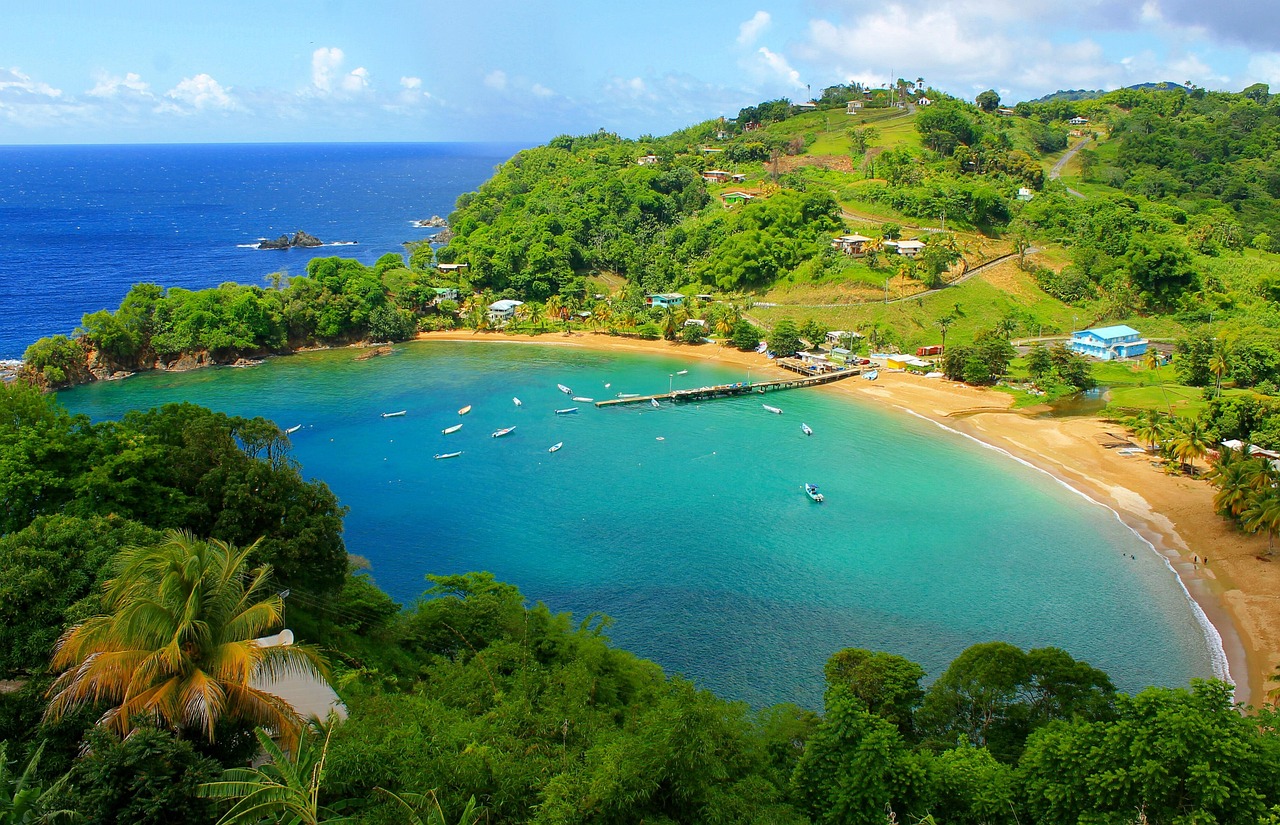
Interested in visiting Caribbean ?
Get in Touch to Book Your Holiday Today!
You can always use our search to find your perfect holiday or get in touch to speak to a member of our sales team!